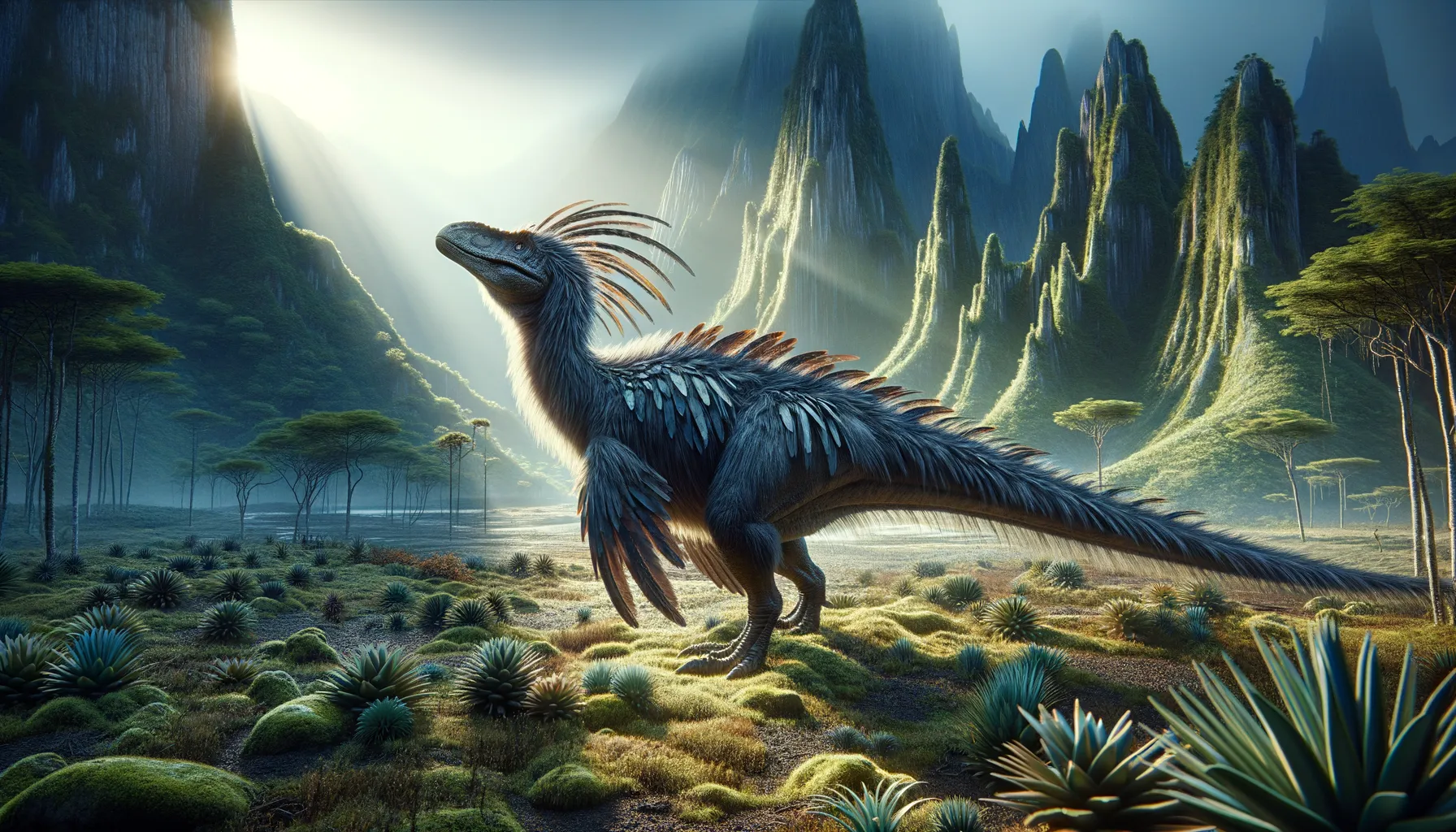
Sinornithosaurus
Feathered predator from the ancient skies.
Period
Cretaceous
Length
Roughly 1 meter in length.
Height
Approximately 0.9 meters tall.
Weight
Around 3 kilograms.
Sinornithosaurus was a feathered dinosaur closely related to birds. It lived during the Early Cretaceous period and was discovered in the Liaoning province of China. Known for its bird-like characteristics, it helps scientists understand the link between dinosaurs and modern birds. Its body was covered in feathers and it had a lightweight, agile build, ideal for its predatory nature. Sinornithosaurus played a significant role in the diverse ecosystem of its time.
Diet
Sinornithosaurus was carnivorous, likely preying on small animals and insects. It used its claws and teeth to capture and consume its meals efficiently.
Hunting
It was a skilled hunter, using its speed and agility to catch prey. Its sharp claws and teeth were suitable for grabbing and eating small animals.
Environmental challenges
Sinornithosaurus faced challenges such as finding food in a competitive ecosystem with many predators. Climate changes might have influenced the vegetation and prey availability. Volcanic activity in the region could have impacted its habitat and forced adaptations.
Speed
It was likely fast and agile, aiding its predatory lifestyle.
Lifespan
Estimated around 10-20 years based on similar species.
First discovery
Discovered in the early 1990s in Liaoning, China.
Fun Facts
- Sinornithosaurus lived about 130 million years ago during the early Cretaceous period.
- It is one of the first dinosaurs discovered to have feathers, providing crucial evidence for the connection between birds and dinosaurs.
- Sinornithosaurus had long arms and hands, indicating it was likely an agile climber.
- Despite having feathers, it is believed that Sinornithosaurus did not fly but possibly used its feathers for gliding or insulation.
- It belonged to the Dromaeosauridae family, which also includes the famous Velociraptor.
- Fossils of Sinornithosaurus have mainly been found in what is now China.
- Some scientists hypothesize that Sinornithosaurus might have had venomous bites, a rare trait among dinosaurs.
Growth and Development
Young Sinornithosaurus likely grew rapidly to reach adulthood quickly, staying hidden from large predators. As they matured, their feathers developed, which might have played roles in temperature regulation and allowing them limited flight abilities.
Habitat
Sinornithosaurus inhabited forested regions, where it could easily find prey and hide from larger predators. The dense vegetation provided cover and a rich source of food. The area was volcanic, affecting the landscape and climate during its existence.
Interaction with other species
Sinornithosaurus shared its habitat with various other species, including large dinosaurs, flying pterosaurs, and early mammals. It possibly competed with other predators for food resources. Its interactions were likely more competitive than cooperative.
Natural lifespan
The natural lifespan was around 10-20 years.
Reproduction
Like other dinosaurs, Sinornithosaurus likely laid eggs. The eggs were probably laid in nests and guarded by one or both parents. Hatchlings had to be independent quickly due to the threats from predators.
Social behaviour
Sinornithosaurus might have been a solitary predator, as social structures are less common in small predatory dinosaurs. However, they may have formed groups during the breeding season. Defensive behavior likely included using their agility and speed to escape threats.
Fossil locations
Sinornithosaurus fossils have been primarily found in the Liaoning province of China. The region is known for its rich fossil beds, which have preserved delicate feather structures. These discoveries have provided crucial insights into the evolution of feathers in dinosaurs.
